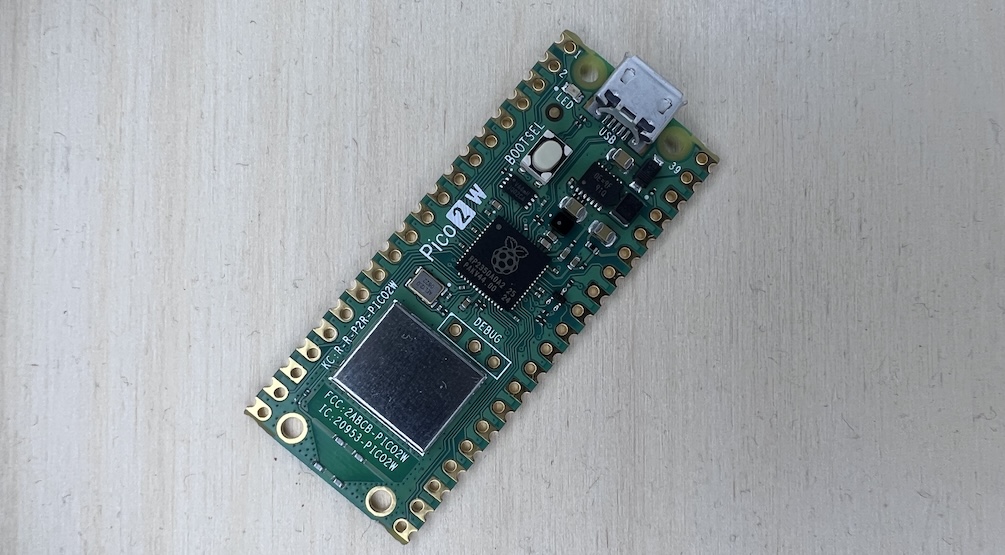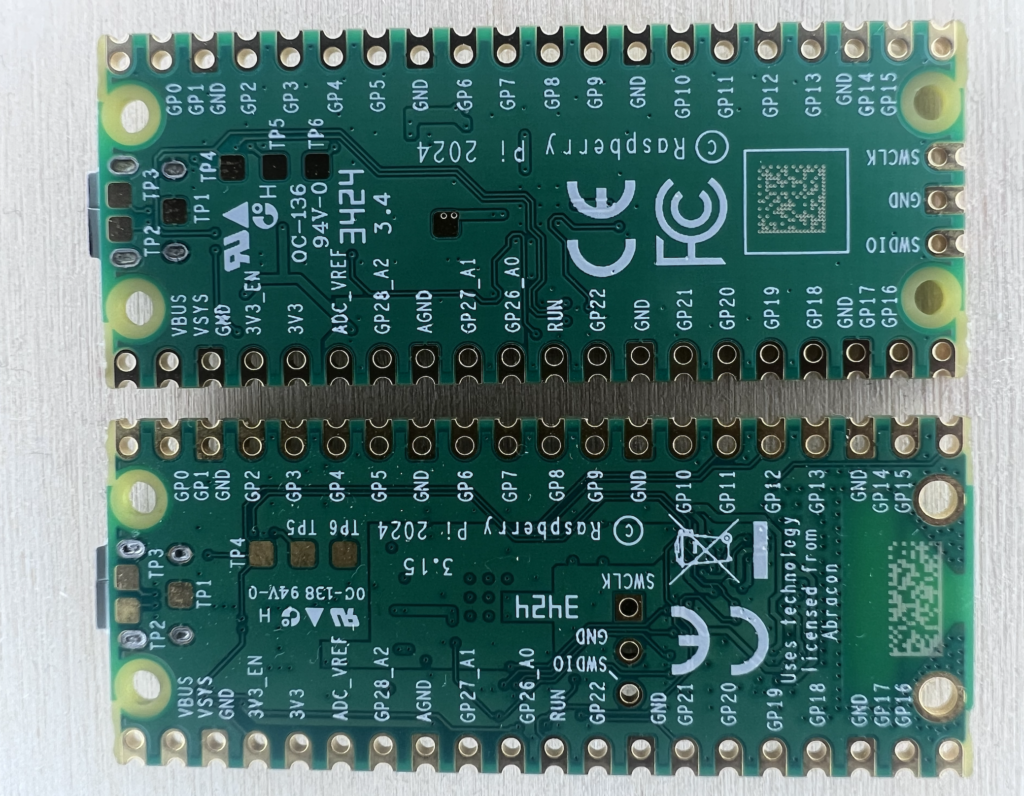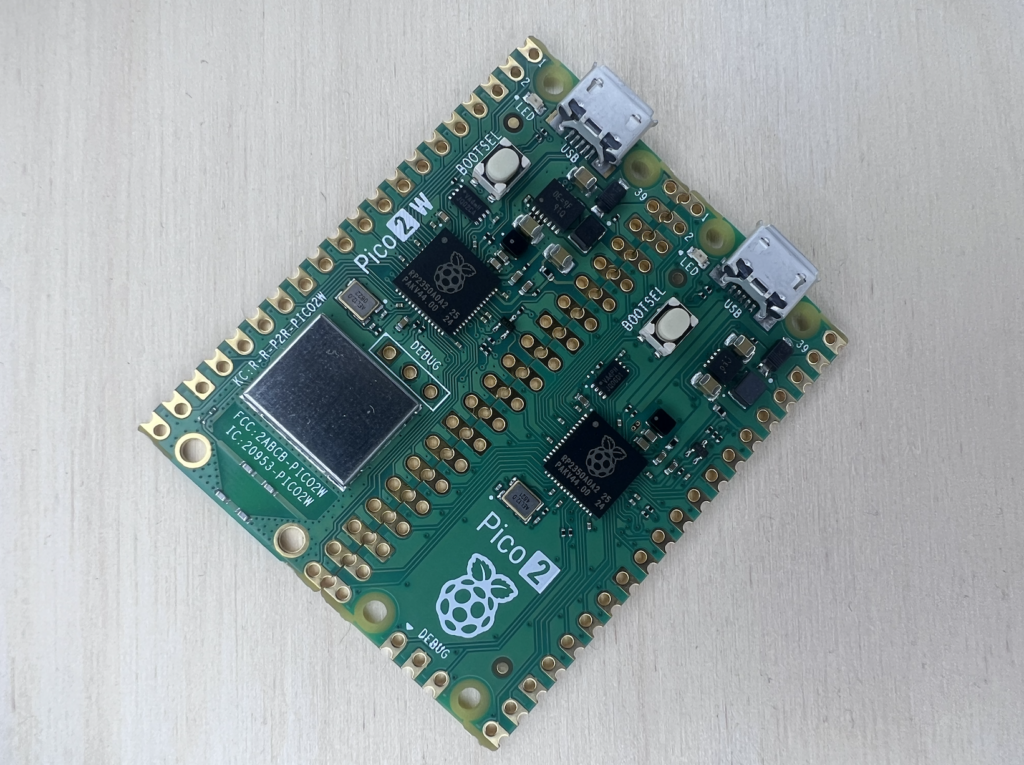Just a few months after the original, Raspberry Pi has released its latest microcontroller offering, the Raspberry Pi Pico 2 W. Building on the Raspberry Pi Pico 2, this wireless-enabled version adds WiFi/Bluetooth connectivity via, giving us so much more room for activities.

Table of Contents
Raspberry Pi Pico 2 W Hardware Improvements
When we compare it to the original Raspberry Pi Pico W, the heart of the board (the RP2350 microcontroller) brings some decent upgrades over the original RP2040. The Pico 2 W’s new Cortex-M33 cores run at 150MHz (up from the dual 133MHz M0 cores), you get 520KB of SRAM and 4MB of flash storage (both doubled compared to the original RP2040) and there are numerous improvements to power efficiency thanks to a new switch-mode power supply.
For those interested in RISC-V, the Pico 2/Pico 2 W also has 2 Hazard3 RISC-V cores (also running at 150MHz) available, though do note that it’s one or the other, you can’t run both at the same time. If you want the nitty-gritty details of the RP2350 chip itself, Nick Francis has an excellent deep dive into what makes it tick.
| Pico 2 W | |
|---|---|
| Processor | Dual Arm Cortex-M33 or dual Hazard3 RISC-V processors @ 150MHz |
| Chip | Raspberry Pi RP2350 |
| SRAM | 520 KB on-chip SRAM |
| Compatibility | Software- and hardware-compatible with Raspberry Pi Pico 1 |
| Programming | Drag-and-drop programming using mass storage over USB |
| Features | Castellated module allows soldering direct to carrier boards |
| Security | Robust and fully documented security features: |
| ARM TrustZone for Cortex-M | |
| Optional boot signing, enforced by on-chip mask ROM, with key fingerprint in OTP | |
| Protected OTP storage for optional boot decryption key | |
| Global bus filtering based on Arm or RISC-V security/privilege levels | |
| Peripherals, GPIOs, and DMA channels individually assignable to security domains | |
| Hardware mitigations for fault injection attacks | |
| Hardware SHA-256 accelerator | |
| GPIO and I/O | 24 × PWM channels, 3 × ADC channels, 2 × UART, 2 × SPI controllers, 2 × I2C controllers |
| Wireless | 2.4GHz 802.11n wireless LAN |
| Bluetooth 5.2 | |
| Peripherals | 1 × USB 1.1 controller and PHY, with host and device support |
| 12 × PIO state machines | |
| Input Voltage | Supported input voltage 1.8–5.5V DC |
| Operating Temperature | -20°C to +85°C |

Raspberry Pi Pico 2 W – Where Can I Buy One?
All of your favourite (mine is The Pi Hut, just saying) approved Raspberry Pi resellers will have the Pico 2 W available at some point soon, though, like the earlier models, it may take a bit of time for stock to trickle through to all parts of the globe. Here’s to hoping it’ll be available to grab before Christmas as these could make a fun stocking filler.
At $7, it’s a very capable microcontroller!

Is the Software Ready?
It will take a little while for everyone to add support post-launch day, but we already have a few resources that can get you up and running.
The official Raspberry Pi Pico SDK repository over on GitHub will allow you to define pico2_w as the board type to compile specifically for that, so that’s nice. MicroPython will also hopefully have a port out available very soon (if it’s not pushed at the same time I’ve hit publish on this..) and many other projects will no doubt be implementing support shortly after launch.
Third-party manufacturers didn’t hang around, getting in on the action either. Pimoroni has already announced their Pico Plus 2 W, which adds some nice quality-of-life features to the base Raspberry Pi Pico 2 design.
To round things off, I’d love to tell you more about all of the wonderful things you can do with these boards and provide some kind of testing/feedback, but microcontrollers aren’t really my forte (I’m more of a full-fat Raspberry Pi 5 guy) – though I’m definitely interested in seeing what cool projects people come up with, so do let me know down below if you’re planning to build something with your Pico 2 W as I may just steal the idea..
1 comment
FWIW – Adafruit already has CircuitPython ported to the Pico2W